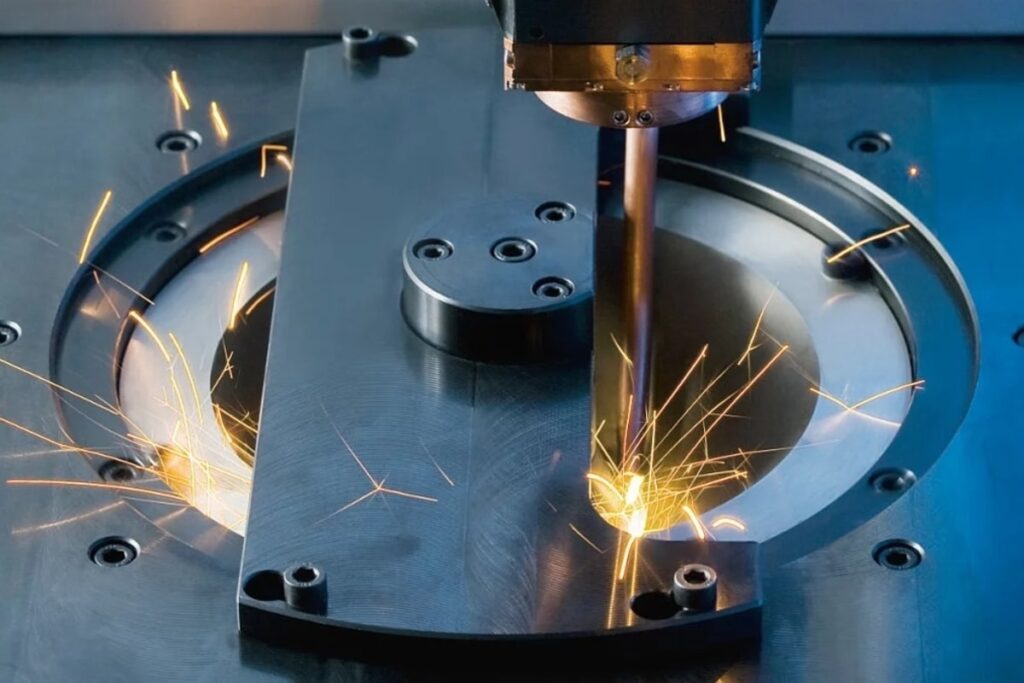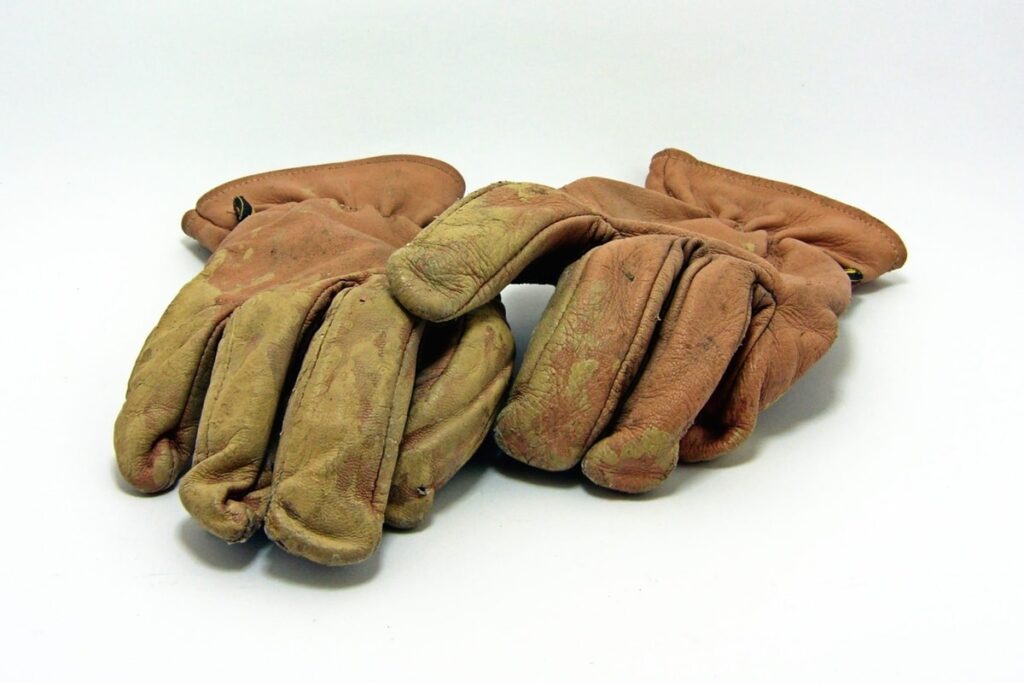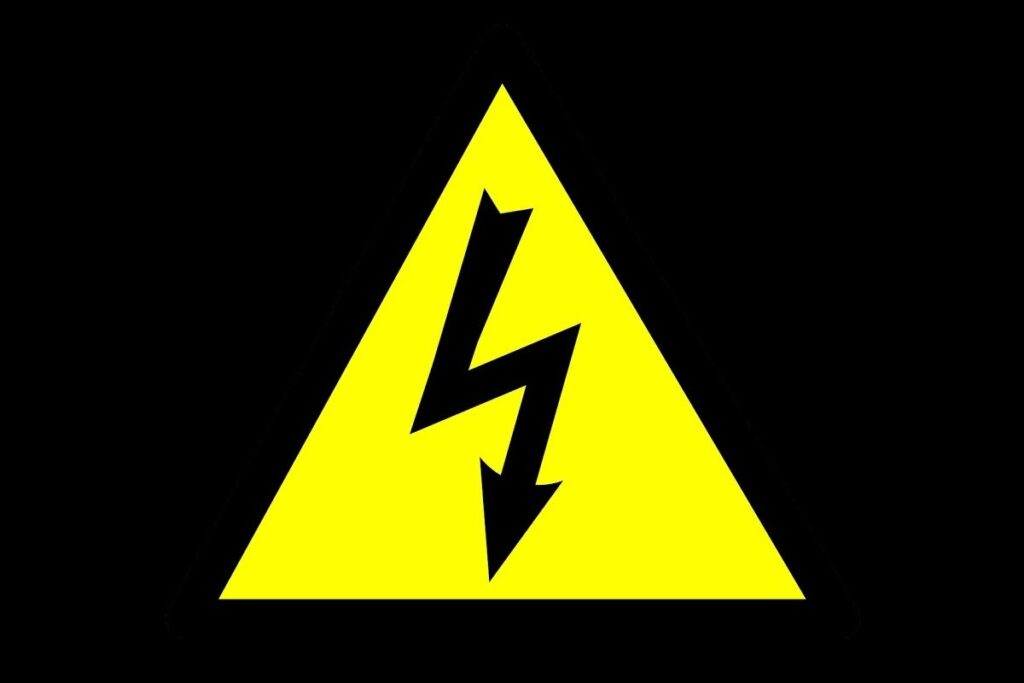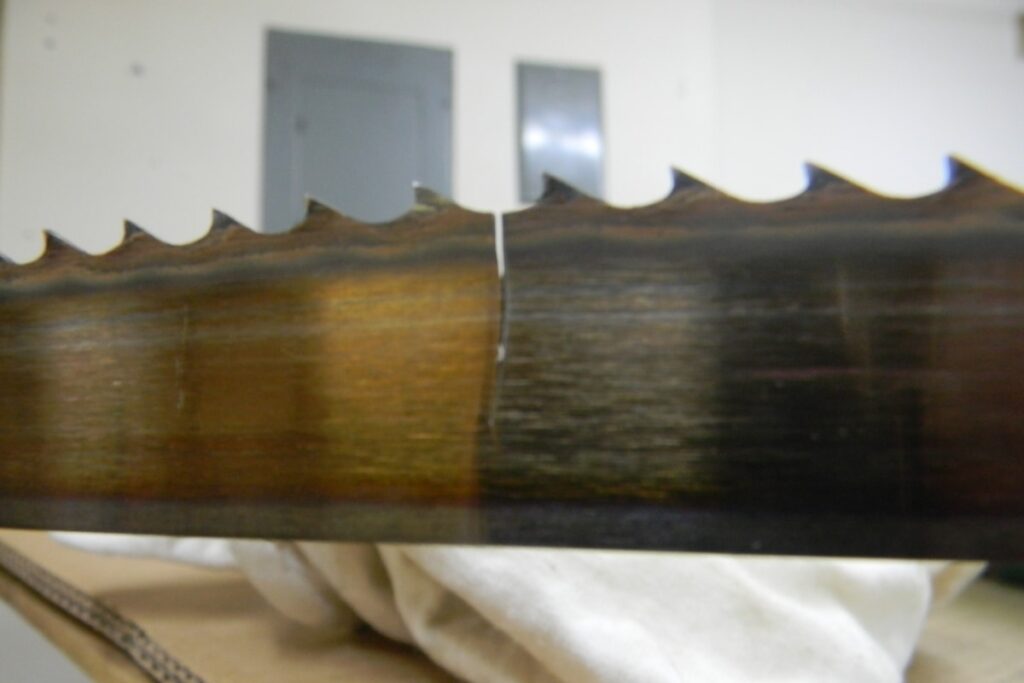Tungsten inert gas (TIG) is one of the most common forms of metal-joining processes. It’s used in industries such as construction, automotive manufacturing, shipbuilding, aerospace engineering, electronics repair, and more.
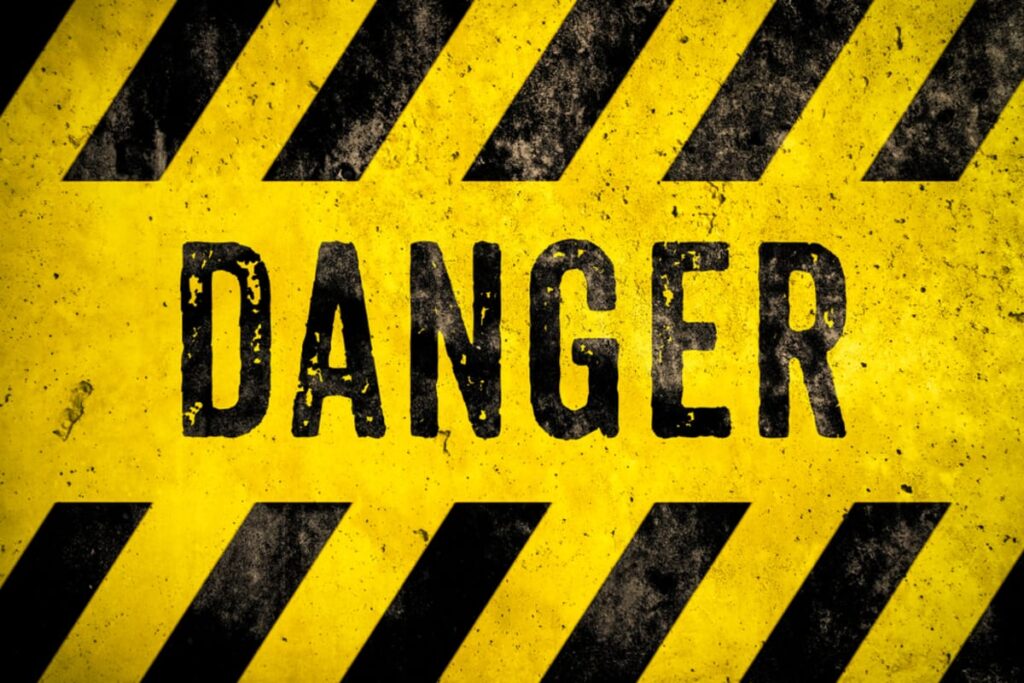
While it can be an effective technique, there are many dangers that come with using this method. Here we’ll take a look at some of those risks.
Before you start working on your next project, make sure you’re prepared! Read through our tips for safer welding so you know what tools to use and how to avoid accidents.
And if you’ve never done any kind of metalworking before, check out these great beginner projects. Also, keep reading below for specific safety precautions to follow when performing different types of TIG welds.
1. Radiation
The effects of exposure to direct ultraviolet (UV) radiation on your skin are similar to those of exposure to sunlight, but they happen far more quickly and after less exposure time.
Redness can develop after even a little exposure, and it will get worse as welding power and exposure time rise.
The only way to get around this issue when welding is to wear a coverall that completely encloses your body. This involves wearing gloves and a welding hood that protects you from radiation as well as the heat produced close to the arc.
2. Electrocution
When electricity passes through a person, it leaves behind charged particles called electrons. Electrons have a negative charge, but since humans contain free ions of positive hydrogen atoms, the excess electrons accumulate on the surface of the human body.
Normally, this doesn’t pose too big of a problem. But if the voltage level suddenly increases beyond the tolerance range of the human body, the accumulated charges can pass right through the outer layer of cells and travel down the spinal cord to the brain, causing major damage.
Although rare, this type of incident occurs quite frequently among young children who touch live electrical wiring after touching something conductive, such as aluminum foil.
To minimize the chance of such incidents occurring, employers must install circuitry that automatically cuts off power whenever anyone approaches an outlet.
Furthermore, they need to train staff members on how to recognize the signs of danger and report them directly to management.
Third-Degree Burns
An electric arc creates heat, which generates intense levels of radiant energy. Any object located close enough to receive this powerful beam will get extremely hot very quickly, sometimes reaching temperatures much higher than 2,000 degrees Fahrenheit.
Water is no exception—it absorbs this radiation readily, resulting in its rapid heating up to hundreds of degrees above normal body temperature.
Because of the high boiling point of water, the molten liquid becomes superheated and releases a tremendous amount of thermal energy, creating steam and expanding rapidly towards the nearest conductor.
When coming into contact with skin tissue, this hot blast causes third-degree burn wounds that require medical attention.
3. Fire Outbreaks
Whenever sparks jump across gaps, combustible gases are formed. Once ignited, the flame spreads until oxygen gets access to a sufficient fuel supply. Gas leaks can occur anywhere along the path of the spark, including inside sealed containers.
Accidental Ignition of Flammable Gases
Since TIG torches carry concentrated argon and nitrogen mixtures, they emit intense flames capable of igniting surrounding air containing natural gases. This makes it easy for the torch nozzle to ignite leaking fuel.
Accidental ignition of argon and oxygen mixtures inside closed compartments poses significant health threats, especially to operators. Fortunately, modern technology allows us to detect leakage early and shut down the system.
How to Prevent Fire Outbreaks in a TIG Welding Workspace
Installation of Appropriate Detection Systems
Employers should put in place appropriate detection systems to monitor the status of all critical points in their facilities and maintain control over potential explosion sources.
Good Ventilation System
Properly installed exhaust fans play a vital role in reducing harmful emissions produced by various industrial activities. However, improper maintenance of ventilation systems can significantly increase pollution concentrations.
Excessive accumulation of dust and dirt clogs filters, blocking airflow and forcing fan blades to break prematurely. On top of that, neglecting regular servicing leads to premature motor failure and increased operational costs.
Avoid the Use of Poor-Quality Tools
Ultimately, poor-quality lubricants can cause engine overheating that ultimately results in catastrophic fires. By taking care of their HVAC systems, businesses can save money and improve workplace conditions dramatically.
4. Ghastic Injuries
One of the biggest concerns with TIG welding is dealing with carbon monoxide poisoning. This happens because unvented, partially emptied, or incorrectly vented gas cylinder tanks can cause serious injuries.
The National Fire Protection Association recommends checking all gas cylinders regularly and following their guidelines to ensure they’re safe for storage.
They also recommend having two people per tank to prevent accidents and properly ventilate them during operation.
To protect yourself from CO gas poisoning, wear protective clothing made of fire-resistant material while operating the equipment. If you suspect leaking gas inside the building, leave immediately and call 911.
5. Exposure to Toxic Fumes
Carbon tetrafluoride, commonly known as “CF4”, is highly poisonous and dangerous to inhale. When exposed, CF4 burns deep into the lungs, causing severe lung damage.
As a result, exposure to even small amounts of this chemical may lead to death. In addition to avoiding direct contact with the source of the leak, always have someone nearby who knows about the hazard and has been trained by OSHA regarding proper emergency procedures.
6. Accidents in Workspace
If you’re not careful, the clutter around your workspace could hinder your ability to see where you’re going.
A large number of objects placed near the active area of the arc can confuse workers, making it difficult to focus on other important tasks like monitoring the current flow between the tungsten rod tip and the ground plate.
Additionally, loose nails or wires left lying around can become projectiles under certain circumstances and create additional problems. For example, a nail thrown toward the operator could potentially pierce his/her neck or hit him/her head.
These kinds of accidents often happen due to human error. Therefore, clear away everything within reach of a worker and observe strict safety protocols to reduce the risk of injury.
Why You Should Put On Protective Clothing When TIG Welding
Welding requires heavy-duty protective gear designed specifically to shield against extreme heat, cold, noise, chemicals, and flying pieces of shrapnel.
This includes long-sleeve shirts, pants, eyeglasses, hearing protection, hard hats, gloves, and shoe covers. Eye protection is particularly important because prolonged periods spent looking directly at the arc produce damaging ultraviolet rays.
All together, good welding apparel helps protect workers from the harsh realities of the trade.
Some safety tips to help you get started on TIG welding:
unwelded
Finally, if you are welding with another person, make sure they know what they are doing. You don’t want to end up ruining their work because they didn’t know what they were doing.
Protective Clothing for TIG Welding
Wearing welding safety clothes is a must if you want to avoid any potential accidents while working. Protecting your body from the heat, flame, and sparks is very important when welding.
Make sure you buy the proper welding clothing so that you’ll have the necessary level of welding protection. Welding clothing is made to protect you from the risks associated with your hobby.
Welders typically wear the following sorts of clothing:
Gloves and Gauntlets
Wearing heat-resistant gloves is essential while you are welding. Gloves protect the fingers from getting burned and damaged by sharp fragments created during the welding process.
There are several options available today if you’re looking to buy welding gloves. Once you know how you’ll approach your welding, you should be able to find the gloves you require, as many different welding gloves are designed for particular techniques.
These days, welding gloves and gauntlets are made from a wide range of materials, such as animal skin and Kevlar. They also have linings made of wool and fleece to make us feel better.
If you frequently weld at high temperatures, consider acquiring additional heavy-duty gloves that can withstand all temperatures. Try to use gloves with a medium thickness for MIG welding. To gain the flexibility and competence you need to effectively accomplish this kind of welding operation, use thinner leather gloves for TIG welding.
Footwear
Your next step should be to think about buying the proper welding footwear to protect your feet and toes from the heat once you’ve bought some adequate welding gloves.
The kind of heat protection you’ll need for any welding operation you take on can be obtained by investing in a pair of high-top boots or sturdy leather shoes. Sturdy shoes allow welders freedom of movement while minimizing the risk of slipping.
Leather or rubber-covered shoes are ideal for welding. In order to provide yourself with even greater protection, make sure that your pants’ legs are tucked into your boots. To protect your toes, it is advisable to select boots with steel toe caps. A metatarsal protector should be purchased if you do want lace-up boots, as well.
Clothing
Regarding your passion for welding, consider the style of shirt and pants you should get. Short-sleeved shirts and shorts are not recommended for welding.
This is due to the fact that short-sleeved shirts and shorts don’t adequately cover your skin to offer a sufficient amount of safety while welding, which is why you should wear clothing that covers your skin to increase your protection.
Therefore, you should get flame-resistant long sleeve shirts and pants. Long sleeves offer maximum comfort while providing adequate coverage for hands and arms during operations.
Since Demin pants are flame-resistant, we advise buying them. When working on a welding project, be sure to also put on a welding jacket or apron for added protection. Invest in a flame-resistant coat as well; these jackets are currently available for a reasonable price.
Headgear
Headsets protect against loud noises generated by the process while protecting the ears from excessive sound waves.
When you are welding, another piece of equipment you’ll need is a welding helmet because it will shield you from arc radiation. While welding, your eye is extremely vulnerable to catastrophic damage from any arc radiation exposure.
Because of this, whenever you are welding, you must wear specialized, top-notch eye protection. Auto-darkening helmets and fixed shade helmets are the two main types of welding helmets that you may buy. Next, we’ll go over these two helmets’ distinctions in depth.
Auto-Darkening Headgear
Auto-darkening helmets are one of the most popular welding helmets available today. Based on what you are welding, these helmets change color in response to the arc.
Therefore, fixed shade works best when using a particular welding technique on a specific type of material while maintaining the same operating settings. An auto-darkening helmet will be much better for you if you plan to change the welding conditions.
Drawbacks of Auto-Darkening Headgear
The advantages of auto-darkening welding helmets have been greatly enhanced by new technologies. Optical sensors that detect light from the weld and adjust as necessary were previously utilized in auto-darkening helmets. Nevertheless, modern auto-darkening helmets come equipped with two, three, or four magnetic sensors that can identify the magnetic field produced by an arc.
As a result, auto-darkening helmets today are quite reliable and effective at adjusting the lens’s shade. Nowadays, the majority of auto-darkening helmets adjust in as little as 0.05 milliseconds.
The ANSI Z87 safety regulations must be followed if you plan to buy an auto-darkening helmet. If the helmet specifies that it complies with these requirements, you may be sure that it has undergone sufficient testing and is safe to wear.
Fixed-Tint Helmets
Make sure you acquire the appropriate fixed shade helmet for the type of welding you will be doing when you go to the store to buy one. No matter how much light the arc produces, fixed shade helmets only provide a certain level of protection.
Fixed shade helmets come in various grades, and particular categories are best suited for various sorts of activities. Although some manufacturers provide fixed shade helmets in the range of 8 to 13, the majority of options fall between 9 and 13. Check out the OSHA website if you need more details on the best fixed shade helmet for your welding use case.
Bandana
Before you begin your welding adventures, think about getting a suitable welding bandana. Your welding bandana will serve as a layer of protection between your head and your welding helmet, which is important to remember. To protect your head inside of your welding helmet, get a thin bandana or thin cotton cap.
Safety Glasses
Prior to actually attempting to weld, check that you have welding safety glasses as the final piece of equipment. To ensure that your eyes are well protected, wear your welding safety glasses underneath your helmet. Anytime you need to shield your eyes from dust and particles, it’s a good idea to wear your welding safety glasses.
Make sure your welding safety glasses include side shields that comply with ANSI Z87 standards, wraparound lenses, and cover your eyes on the sides. When you need to fit into a smaller location, you can also choose to don safety glasses rather than a welding helmet. However, since you won’t be covering your face, exercise caution.
You’re now prepared to begin working on your welding tasks since you’ve bought all of the necessary welding equipment. Keep in mind, don’t compromise on quality when it comes to welding equipment. To keep yourself safe while engaging in your passion, be sure to acquire the greatest protection. Ensure you buy protective gear that is suitable to help you avoid incurring any safety hazards.
The Bottom Line
Now that you know how a TIG welder can harm you, it’s safe to say that you are aware of the risks or common dangers of TIG welding. Unsurprisingly, welders can be dangerous, just like any other machinery or power tools.
However, you may simply protect yourself if you take the right safety measures and wear the appropriate gear. Safety clothing is essential to reduce the risks. This way, one can avoid accidents and injuries while working. The equipment you’re using for welding should be protected as well.
Furthermore, if you’re using an arc welder, make sure that your hands are protected so that they won’t get burned by the heat. Also, ensure that your face is protected when you’re working with welding equipment.
If you are not properly trained, you can hurt yourself unknowingly. However, with good training and qualifications, you should be able to work safely and effectively.
Though welding training can be expensive and time-consuming, it’s well worth it as this job requires expertise and caution. With proper preparation, knowledge, and vigilance, TIG welding remains a valuable tool for numerous tradesmen throughout the world.
Darell is a Certified Welding Engineer (CWEng) with over 23 years of expertise in TIG, MIG, MAG, dual flux, and stick welding. He is a senior welding engineer who has a desire to share his experience. Visit unwelded.com and join Darell as well as other welding enthusiasts in obtaining fabrication knowledge, amazing welding gadgets, and useful welding insights.
